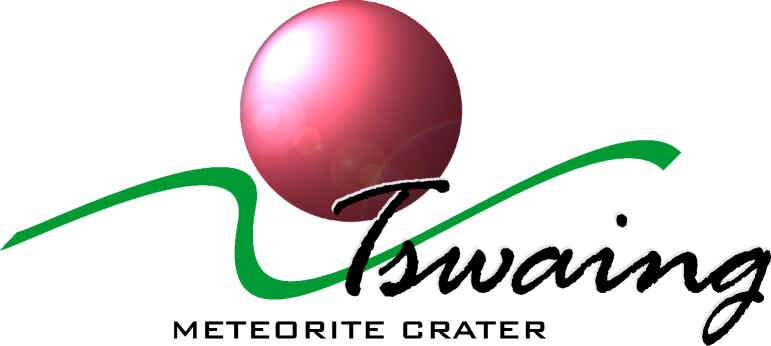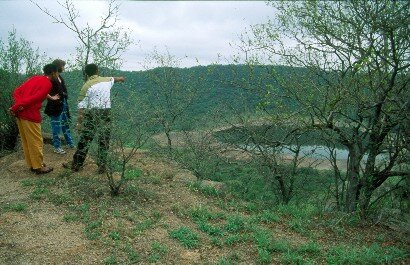|
|
 |
|---|---|
|
Witnesses Of The Impact |
|
| There is no direct evidence of who and what exactly was incinerated on that fateful day, some 220 000 years ago, as the area for kilometres around the impact site would have been obliterated. However, studies of faunas of similar age from the cave sites at Gladysvale and Swartkrans, some 80 kilometres south of the impact site, coupled with archaeological studies, give vital clues to the types of animals that lived in the Tswaing region at the time, as well as to the environment that existed prior to the impact. The plains would not have looked strange to present-day South Africans, as the vegetation would have consisted of widespread grasslands, scattered bushveld (savannah) and broken woodlands. These grasslands would have been dominated by large herds of mammalian grazers and browsers and the predators feeding on them. These included the brown hyena, black and white rhino, giraffe and a variety of antelope including kudu and bushbuck. River courses probably had woodland fringes, which would have been home to various monkeys. The inclusion in the fauna of hippo, lechwe and waterbuck shows that, unlike today, wet pans and marsh areas must have been common. Indeed, it has been proven that the meteorite probably plunged into a lake or swamp. Closer examination of the fauna provides a few surprises, as it contained a number of animal forms that no longer exist. These include the giant wildebeest or hartebeest, a long-horned giant buffalo, Bond's springbok and the giant zebra. People also inhabited the plains. It is known that there were early modern humans living periodically at a site near Wonderboom Mountain on the Magaliesberg, known today as the Wonderboom Handaxe Site. Here they manufactured crude stone tools and weapons, collected edible plants and waylaid and killed young, sick or old animals that were part of the vast herds of antelope that used to migrate through the Wonderboompoort (a defile or pass west of Wonderboom Mountain). Research has indicated that the Wonderboom Handaxe Site was occupied during the Early Stone Age (500 000 to 120 000 years ago). It is one of the most important Early Stone Age sites in South Africa. This proves that Early Stone Age people probably witnessed the meteorite impact. There was, however, no symbol or written word that they might have used to describe the terror of the event, as the impact event occurred some 170 000 years before the first rock art record in South Africa. |
|
| (Source: REIMOLD, W U, BRANDT, D, DE JONG, R C, HANCOX, J, 1999, Tswaing Meteorite Crater. An introduction to the natural and cultural history of the Tswaing region including a description of the hiking trail. Popular Geoscience Series 1. Pretoria: Council for Geoscience. Available at the Council for Geoscience, Pretoria, South Africa) | |
| All intellectual property rights, including but not limited to copyright and trademarks, vested in the material contained on the NFI website is held by the NFI and may not be copied, reproduced, adapted, published or distributed in any form whatsoever without the prior written consent of the responsible person at the NFI. | |
